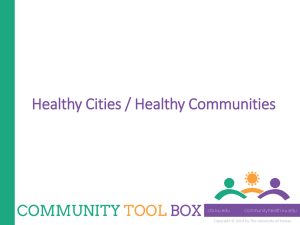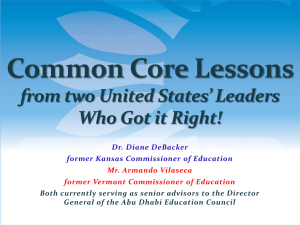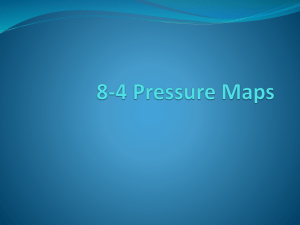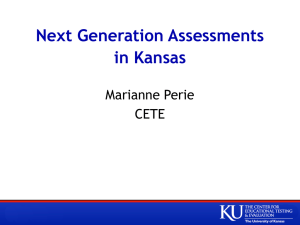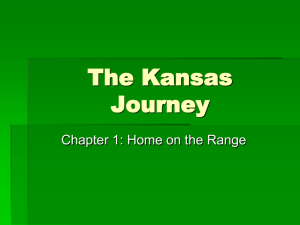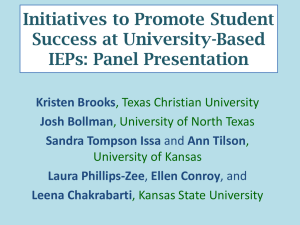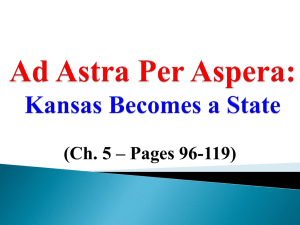presentation slides
advertisement
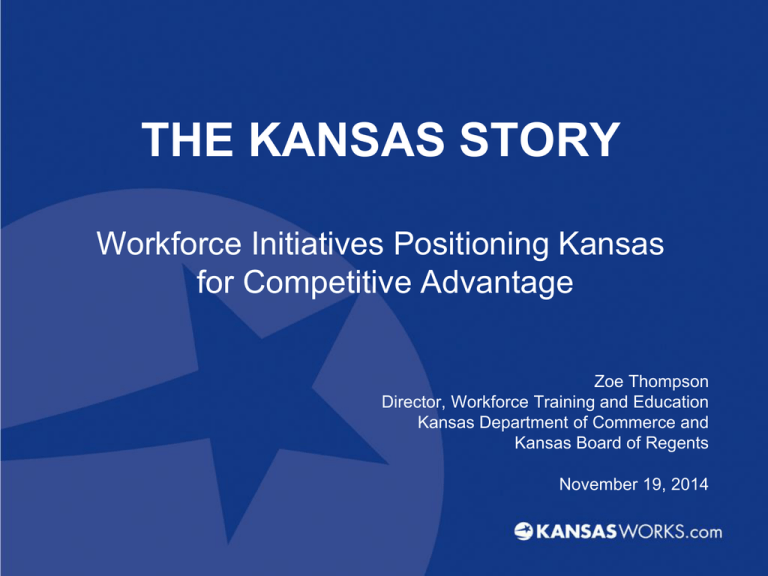
THE KANSAS STORY Workforce Initiatives Positioning Kansas for Competitive Advantage Zoe Thompson Director, Workforce Training and Education Kansas Department of Commerce and Kansas Board of Regents November 19, 2014 Governor Brownback’s Vision for a Competitive Kansas Economic Strategic Plan Respond to Business Agency Collaboration Incremental Decisions Support Comprehensive Policy Changes Statute Policy Procedure Operational Connection is Vital • Connection must be structural and survive an administration or person • Must connect workforce/economic development and education agencies • Must share common vision and goals 5 Big Changes to Funding for Community & Technical Colleges Old funding model – no relationship to course or program delivered New funding model – based on cost to deliver course or program Based on a variety of costs including instructor costs, extraordinary costs, instructional and institutional support costs Results – increased $$ for courses that cost more to deliver SYSTEM WIDE, INDUSTRY DRIVEN PROGRAM ALIGNMENT High School Students Earn College Credit – SB155 Number of High School Participants (Headcount) College Credit Hours Earned by High School Students 10,000 60,799 60,000 6,101 6,000 4,000 70,000 8,208 8,000 50,000 3,475 44,087 3,870 40,000 2,000 30,000 0 20,000 2011 2012 2013 2014 28,00028,161 10,000 Industry Credentials Earned 1,500 0 2011 2012 2013 2014 1,419 201 2 1,000 711 500 0 548 8 College Certificates Healthcare Welding Manufacturing/Machining Aerostructures All Other 10% 26% 7% 6% Enrollment College Credentials Industry Credentials 12 credit hour Pathway Number Employed Year 1 Year 2 Year 3 Cumulative 1069 994 1173 3118* 184 456 710 1350 1191 1086 1514 3791 341 450 325 1116 366 247 229 842 *Cumulative, unduplicated headcount 9% AO-K TANF Enrollments Enrolled Completed Total TANF Students served 42% 64 14 78 Legislative Support for AO-K 2014 legislative session included: • AO-K Proviso - $500,000 for tuition support • GED Accelerator - $1.9M for incentives for colleges ► $500/student for GED attainment ► $170/student for cost of taking GED exam ► $1000/student for career technical education credential Employer Engagement Supports Industry Credential Attainment Three levels of engagement • Supporter, Partner, Champion All levels begin with Kansas Department of Commerce Skills Pledge Higher level of recognition follows more “engaged” use of industry credentials Industry Driven Initiatives Support the Governor’s Strategic Economic Plan for Kansas • Companies sign the Kansas Department of Commerce Skills Pledge recognizing and prioritizing industry credentials • Workforce AID (Aligned with Industry Demand) responds to company demand for a skilled, credentialed workforce Workforce AID KANSAS COMPANIES KANSAS BOARD OF REGENTS KANSAS DEPARTMENT OF COMMERCE STATE LEVEL SINGLE POINT OF CONTACT ED = Director of Workforce Training and Education Federal/State Training Resources Community and Technical Colleges SKILLED EMPLOYEES WITH INDUSTRY AND COLLEGE CREDENTIALS Private Resources FIND, TRAIN AND DELIVER FIND Identify talent need/quantity/timing Partner with companies Recruit qualified participants TRAIN Employability and Technical Skills Industry credentials- NIMS, MSSC, AWS, etc. College Credit DELIVER Skilled Workforce PUBLIC/PRIVATE PARTNERSHIPS KEY TO SUCCESS Companies Private Staffing Agencies Colleges KANSASWORKS IMPACT ON THE KANSAS ECONOMY IN 2014 (FEB-OCT) • 12 training projects across the state • Nearly 100 participants completed training with industry credentials/college credit • 92% with full industry credentials=employed • Average starting wage = $14.44+/• Over $2,500,000 impact on the Kansas economy in just nine months Thank You, Questions, Contact Us • Zoe Thompson Director, Workforce Training & Education, Kansas Department of Commerce and Kansas Board of Regents zthompson@kansascommerce.com 785.296.0205 17


